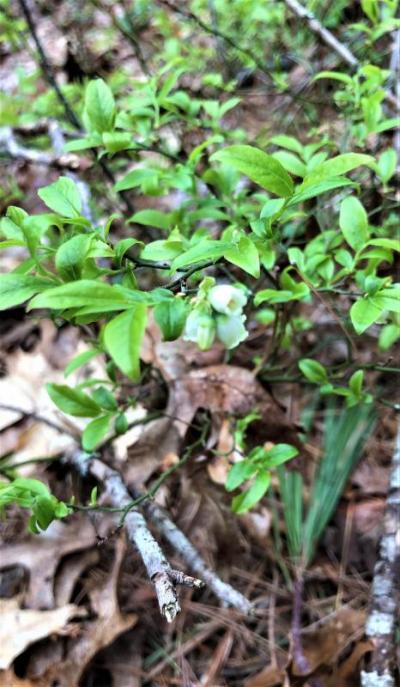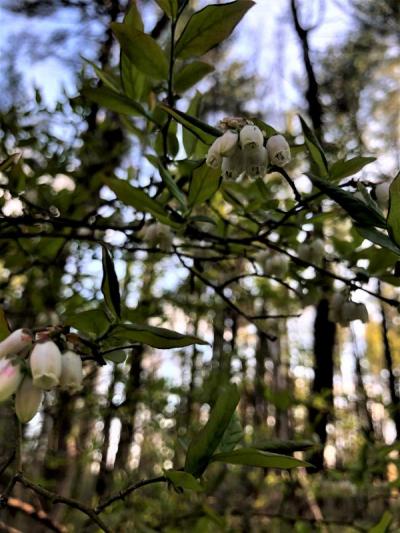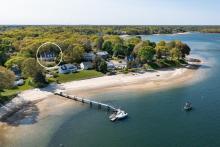Naturalist’s Corner: Blueberries
Posted July 8, 2020
Written by Kyla Isakson
Mid-summer is the perfect time to look for blueberry bushes with fruit. The lowbush blueberry (Vaccinium angustifolium) is native to the northeast, and is widespread in Massachusetts. Lowbush blueberry grows in acidic soils, and it produces white flowers that bloom in May. As its name suggests, the lowbush blueberry is a small plant, ranging from 6 inches to 2 feet tall, and it is smaller than its relative the Northern highbush blueberry (Vaccinium corymbosum), which can range in size from 6 to 12 feet tall.
Northern highbush blueberry is also native to the eastern U.S., and is widespread in Massachusetts. It grows in acidic soils near or in swampy areas. This plant produces white to pink flowers that bloom in May. Both lowbush blueberry and Northern highbush blueberry produce dark berries around July and August, and they provide an edible fruit for birds and humans alike, which make for a great summertime snack. Keep an eye out in the coming weeks for small green to dark blue berries on the blueberry bushes.
As a good rule of thumb, you should not eat any plants or fruits unless you can confirm the species. We discourage members of the community from consuming anything found on our properties or in your yard if you cannot thoroughly identify it. Use your best judgement and be safe.














